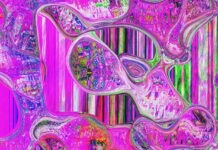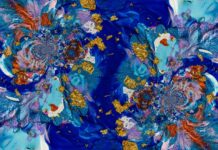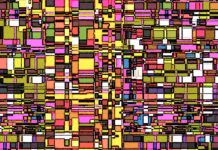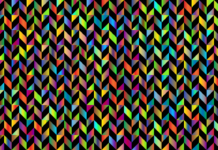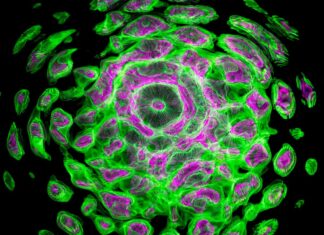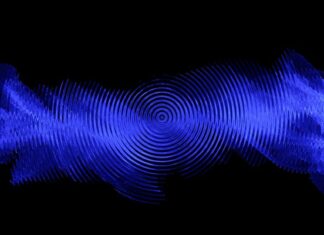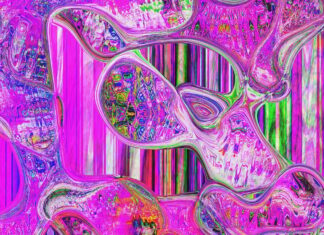Meand, a concept that intertwines with the essence of existence, is a multifaceted notion that has intrigued philosophers, poets, and thinkers throughout the ages. At its core, Meand embodies the very fabric of individuality and interconnectedness that defines the human experience. The word “Meand” itself resonates with a symphony of meanings, echoing the complexity of the concept it represents.
Meand, in its most fundamental form, encapsulates the sense of self. It is the amalgamation of thoughts, emotions, memories, and aspirations that shape a person’s identity. It’s that whisper in the depths of one’s consciousness that speaks of unique qualities, personal history, and dreams that drive an individual forward. Meand is the anchor in the tumultuous sea of existence, providing a sense of stability and coherence in an ever-changing world. Through introspection, individuals seek to grasp the nuances of their Meand, understanding how it evolves over time, influenced by experiences, relationships, and personal growth.
The duality of Meand is revealed in its simultaneous expression of individuality and interconnectedness. While each person’s Meand is distinctly their own, it also intersects with the Meand of others, creating a delicate tapestry of human connections. The interactions between these intersecting Meands give rise to the intricate web of relationships, communities, and societies that define our shared human narrative. From the bonds of friendship forged through shared interests to the deeper connections formed by shared values, Meand weaves individuals into the larger fabric of humanity.
In literature, Meand often takes on metaphorical dimensions, becoming a symbol of the human quest for meaning and belonging. Characters grapple with questions of identity, purpose, and their place in the world, reflecting the universal struggle to understand one’s Meand. Through the pages of novels, the verses of poetry, and the lines of philosophical treatises, the exploration of Meand becomes a mirror through which readers can contemplate their own journeys. The introspective nature of literature allows individuals to connect with the thoughts and emotions of characters, fostering empathy and expanding their perception of the intricate variations of Meand.
Moreover, Meand finds its embodiment in the realm of art. Artists of all disciplines channel their innermost thoughts and feelings into their creations, translating their Meand into visual, auditory, or tactile forms. Paintings, sculptures, music, dance – each medium becomes a vessel through which the artist communicates their unique Meand, inviting audiences to interpret, appreciate, and resonate with their expression. In this way, art becomes a bridge that connects the Meand of the creator with the Meand of the observer, transcending language and cultural barriers to evoke a profound sense of shared humanity.
When examining the concept of Meand, it’s crucial to acknowledge its evolution in the digital age. The rise of social media platforms and online communities has introduced new dimensions to the exploration and expression of Meand. In the virtual realm, individuals curate digital personas that reflect specific facets of their Meand, often blurring the line between authenticity and projection. The curated Meand is presented to a global audience, inviting both validation and scrutiny. While these digital expressions of Meand provide a unique opportunity for connection, they also raise questions about the authenticity of these representations and the potential for comparison-induced anxieties.
Meand encapsulates the intricate dance of individuality and interconnectedness that defines the human experience. It is the sum of one’s thoughts, emotions, memories, and aspirations, interwoven with the threads of relationships, culture, and society. Meand takes on myriad forms – from the personal journey of self-discovery to the shared narratives of literature and the expressive realms of art and digital media. Throughout history, Meand has remained a timeless and universal concept, reflecting humanity’s innate desire to understand the self and its place in the world. As we continue to navigate the complexities of existence, the exploration of Meand serves as a guiding light, illuminating the path to self-awareness, empathy, and meaningful connections with others.
Meand, with its profound significance, extends its tendrils into the depths of philosophy as well. Philosophers have grappled with questions surrounding the nature of identity and the self, attempting to unravel the enigma that is Meand. From the ancient Greeks who pondered the concept of “know thyself” to modern existentialists who explore the individual’s struggle to find meaning in a seemingly indifferent universe, Meand has been a central theme in philosophical discourse. Existential philosophers like Jean-Paul Sartre and Albert Camus delve into the complexities of Meand, examining the tension between personal agency and external influences. They scrutinize the choices individuals make, the authenticity of their actions, and the responsibility that comes with the awareness of one’s Meand.
Meand, when observed in the context of psychology, becomes a focal point for understanding human behavior and cognition. Psychologists delve into the subconscious realms, seeking to decipher the intricate interplay of thoughts, emotions, and motivations that shape an individual’s Meand. Sigmund Freud’s psychoanalytic theory delves into the hidden recesses of the mind, proposing that the Meand is influenced by unconscious desires and conflicts. In contrast, humanistic psychology emphasizes self-actualization, suggesting that individuals have an innate drive to fulfill their unique potentials, aligning their Meand with their truest selves. The field of positive psychology further explores the facets of Meand that contribute to well-being, resilience, and a sense of fulfillment.
Spirituality and religion also offer lenses through which to contemplate the concept of Meand. Many belief systems posit that the journey of self-discovery is intertwined with a larger cosmic narrative. From Eastern philosophies that emphasize interconnectedness and the dissolution of the ego to Western religious traditions that speak of divine purpose and the search for transcendence, Meand takes on a spiritual dimension. Practices such as meditation, prayer, and introspection become vehicles for individuals to delve into the depths of their Meand, seeking enlightenment, inner peace, and a deeper connection with the universe or the divine.
In the realm of education, the understanding of Meand plays a pivotal role in shaping pedagogical approaches. Recognizing that each student possesses a unique combination of talents, interests, and learning styles, educators strive to create environments that honor and nurture individual Meands. Personalized learning, differentiated instruction, and the cultivation of critical thinking skills all contribute to the holistic development of students’ Meands. By fostering an environment where learners can explore their passions and strengths, educators empower individuals to construct a meaningful understanding of themselves and their place in the world.
Economics and sociology intersect with the concept of Meand through the lens of identity and consumerism. In consumer-driven societies, individuals often express their Meand through material possessions, affiliations, and lifestyle choices. These external markers become a part of how they define themselves and how they are perceived by others. This complex interplay between individual Meands and societal expectations can lead to both personal fulfillment and existential conflict. Societal norms and economic structures influence how individuals construct and present their Meand, raising questions about authenticity, conformity, and the pursuit of happiness.
As we venture further into the 21st century, the digital landscape continues to shape the exploration and expression of Meand. Social media platforms offer spaces for individuals to curate and share facets of their Meand with a global audience. However, this digital interaction with Meand comes with its own set of complexities. The carefully crafted narratives on social media often highlight the positive aspects of one’s life, potentially leading to a distorted perception of reality. The blurring of public and private spaces challenges traditional notions of identity, privacy, and the boundaries of Meand. The virtual realm also opens doors to the phenomenon of online communities, where individuals with shared interests or experiences come together to validate and explore their Meand in novel ways.
In summary, Meand is a concept that transcends time, culture, and disciplines. It embodies the essence of individuality while highlighting the threads that connect us as human beings. From philosophy to psychology, art to spirituality, Meand weaves itself into the fabric of our lives, inviting us to introspect, create, and connect. As we navigate the complexities of the modern world, the exploration of Meand remains a profound and timeless endeavor – a journey of self-discovery that leads to greater self-awareness, empathy for others, and a deeper appreciation for the intricate mosaic of human existence.







